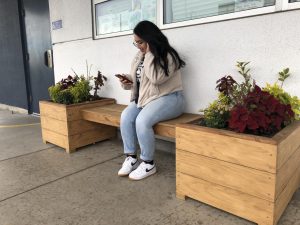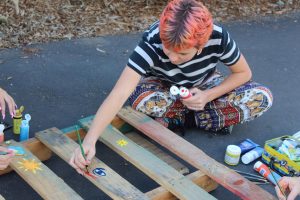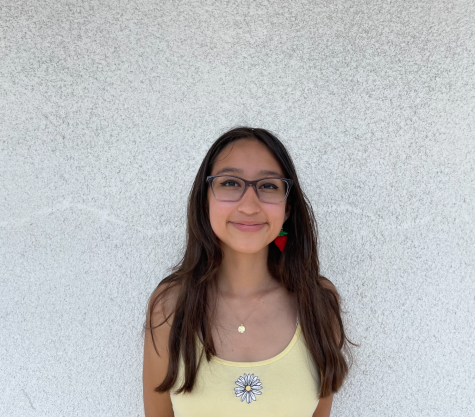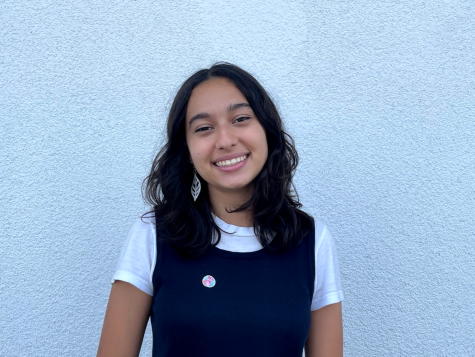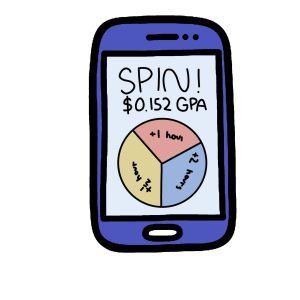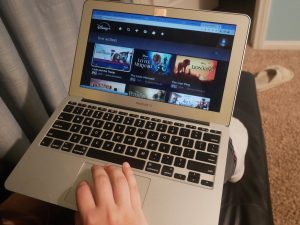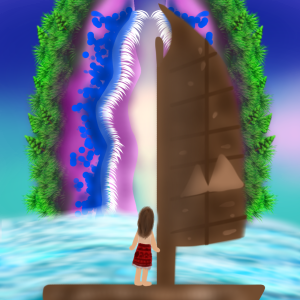A New program helps AP students outside the classroom
Senior Aaron Tewolde attends South Bay Sustainable Communities Community Workshop on Worm Compost. Tewolde attended the event to contribute to the 20 hour service requirement for Advanced Placement (AP) for WE Service.
July 17, 2022
At the beginning of the second semester, Bonita Vista High (BVH) welcomed a new program on campus called the Advanced Placement (AP) with WE Service. In collaboration with other environmental science teachers in the Sweetwater Union High School District (SUHSD), the program is a component of the AP organization in which students receive recognition for community service projects.
“It’s one thing to learn all the material and the standards for AP Environmental Science in the classroom, it’s another to transcend it. This [program] puts practice into play and rewards the [students] for these learning opportunities,” AP Environmental Science teacher and program advisor Jennifer Ekstein said. “AP with WE gives students the opportunity [for] civic engagement and to build an understanding of their active role in solving today’s local and global problems.”
Ekstein’s lessons emphasized projects centered around volunteer work, advocacy, or agency both inside and outside the classroom. These topics are focused on environmental science areas such as biodiversity and climate change. Despite the program’s focus on environmental science, any student who plans on taking an AP test is qualified to be in the program. Any teacher can promote their own branch of the program in their classroom by signing up through the AP classroom, a website managed by College Board. So far, Ekstein is the first BVH teacher to implement this program for her AP Environmental Science class.
“I’ve been collaborating with other teachers in the district, and students have already applied for this. We will have our first year of students graduating with AP with WE cords. Maybe every single teacher on campus will do it because it’s not just environmental science. Any AP teacher can do this.” Ekstein said. “There’s a lot of communication between all the teachers. I’m thankful to work with such an organization. We collaborate and communicate well so we’re able to get this program off the ground.”
The program established that students need 20 hours of community service in advocacy, agency and volunteering in some capacity for environmental science. The students must complete reflections and upload specific pieces of artifacts and evidence. Ekstein then uses a rubric when grading her students’ assignments to see if they meet all of the standards of the program. If they do, they will receive a distinction on their test score that indicates their involvement in the program.
“Students perform a [respective] role within the project team and [then] present results to community members to motivate further actions. For example, my students are doing Google Slides to show what types of projects they’ve been involved with. [They are] applying what they learned in the classroom to real-world circumstances,” Ekstein said.
There are three areas that the program targets: learning opportunities, advocacy and agency of service. Students could garner community service hours from participating in the Youth for a Sustainable Future, the zero-waste program on campus where students can encourage others to compost their food. Students could also acquire hours by helping at the thrift stores that were sponsored by the Green Team on campus.
“[Being in the program has] been cool. It’s been a good motivation to get out there and help the environment. Otherwise, it’s hard to motivate yourself to do any service hours,” AP with WE member and senior Carter Gailband said.
An additional benefit to the program is that it makes students appear more desirable to universities when applying. By being a part of the program and completing its requirements, students can show how they have been committed to their community.
“I want to do something for the environment; it’s one of my passions [because] I care about the environment. When I go to college, I’m going to be studying wildlife management, and maybe some environmental science,” Gailband said. “The environment is important to me, [I want] to be part of the movement to save it.”
At the beginning of the second semester, Ekstein introduced the program to students like Gailband and senior Jaqueline Ruizacosta. She mentioned that she contributed to helping her community through volunteer work.
“I thought it was something I was interested in because I consider myself an environmentalist. I’ll try to advocate for animal rights or try to use less plastic or create unnecessary waste. I thought, ‘Why not participate in an activity that will benefit my college [application]?’ ” Ruizacosta said.
One of the requirements of the program was for the students to create their own initiative and follow it throughout the program. For instance, Ruizacosta had to try out a vegan lifestyle and experience how it can be beneficial to her community.
Despite the late start of the program and its lack of membership, the program has proven its benefits to the community through its members. The passion displayed by both its members and its organizers is pushing this budding program into what Ekstein hopes to be a blossoming movement throughout BVH.
“Hopefully there are more programs like this at school. It would make a great change for our school,” Ruizacosta said. “I hope people take advantage of it. You could do it all by yourself [and] still be an advocate for something. At the end of the day, it’s a win-win opportunity for everyone.”



